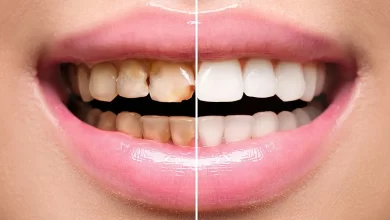What Are The Significance And Functions Of Dental Mirrors?

Dental treatments usually follow a detailed diagnosis which includes a series of X-rays, manual examinations and probing tests. To successfully identify the root cause of the problem, dentists need to see each quadrant. Dental mirrors offer an unobstructed view of the oral cavity. From a clear view of the incisors to the molars ahead, a surgeon uses mirrors to explore the cavity thoroughly.
Tools A Dentist Needs For Exploration
Before treatment can begin, an exact diagnosis is necessary. A combination of tools aids in exploring the dental cavity and visually confirming the presence of plaque, decaying teeth, periodontal disease, and other evident problems. For a deeper analysis, the patient might undergo an x-ray scan.
A few of the necessary exploration tools a dentist uses are:
- Sickle probes
A sickle probe has a long shank and a curved hook-like probe at the end to access cervixes around the teeth. This tool offers a deeper analysis of the pockets between teeth and mouth areas that are difficult to see with the mirror.
- Scaler
While a scaler qualifies as a cleaning tool, it is used with dental mirrors to clear out the calculus and check for infections or periodontal problems underneath.
- Suction device
The human mouth produces saliva rapidly for several reasons. First, a surgeon uses a suction device to avoid moisture from obstructing visibility.
What Are Dental Mirrors?
This is a multi-purpose, adaptable instrument useful in examining the human mouth. For example, a surgeon uses this to separate the mouth walls to better view the occlusal and distal surfaces in the mouth. The tool in question features a head, stem, and handle.
What Are The Functions Of A Dental Mirror?
While the primary function of this tool is to help explore the oral cavity, the following functions include:
Retraction:
The human mouth is not easy to navigate. A dentist uses a mirror to hold tissue, cheeks, and tongue to improve visibility. Mirror handles help retract obstructions during a manual mouth inspection. This exploration tool does not have sharp edges that can be uncomfortable or dangerous to the soft tissues in the oral cavity.
Reflecting Light
The structure of the dental cavity limits the penetration of light across the different regions of the mouth. To guide the light to the darker areas of the cavity, surgeons place the mirror in opposing directions to illuminate the upper or lower molars, premolars, and soft and hard palates. A surgeon moves the mirror handle carefully to improve the line of visibility.
Indirect visibility
Exploring some areas of the mouth is challenging. Since viewing these areas directly is almost impossible, a surgeon will use a mirror to see their reflection. Without the help of a mirror, the dentist would need external scanning technology, which isn’t the most feasible option just for a diagnosis.
Everything You Need To Know About Dental Mirrors
This instrument does not feature varying configurations. Instead, several detachable and attachable parts help a surgeon successfully inspect the dental cavity. Following are some components of this instrument useful in any dental practice:
- Mirror Set
A mirror set features a range of mirrors in various sizes and orientations. The surgeon can change the heads to suit the range of visibility they want during oral analysis. This set includes reusable mirrors in two primary configurations:
- a. Mirror set C/S double surface (6/box)
- b. Mirror set C/S front surface (12/box)
The difference between these two categories is the double and front surfaces that offer different perspectives of visibility and the number of heads present in each box. These can also be bought separately, depending on the type of treatments you offer at your dental practice.
- Para mirror
This variation offers the dentist better visibility for the anterior and posteriors regions of the mouth. This is useful in examining teeth and cavities from all angles. Two primary configurations for this instrument are:
- a. Para mirror anterior (5mm)
- b. Para mirror posterior (5mm)
This tool features a long shank-like handle with a curved working end that perfectly fits the circular shape of the mouth and gums.
- Mirror handles
These handles improve the maneuverability of the mirror head across the oral cavity. Two types of handles are useful for performing distinct functions.
- a. C/S type Measurement
- b. Regular mirror handle
The C/S type helps grasp the mirror and move it around the entire cavity, while the regular handle aids in endodontic procedures. The regular variation features an ergonomic design, with a serrated handle for an improved grip.
High-Quality Dental Mirrors For Your Practice
GerdentUSA Inc. is an FDA-compliant dental surgical instrument manufacturer and supplier for dental practices around the globe. We offer a wide range of surface mirrors, mirror heads, and other accessories at attractive prices. Place an order today!




